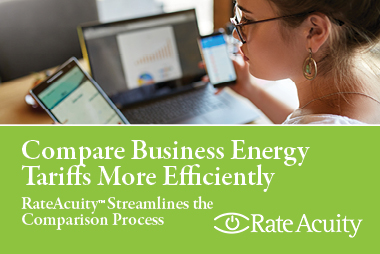Comparing business energy tariffs is not easy. With numerous suppliers and varying rates, finding the best energy deal for your business is difficult. Apart from being a time-consuming process, the traditional approach to tariff comparison leaves ample room for error, making an already cumbersome process even more challenging.
Considering the current business climate, it’s crucial to compare energy tariffs efficiently. The key to ensuring an efficient tariff comparison is having the right knowledge and approach.
The manual process
In general, do not compare business energy tariffs manually. The manual process involves several steps that are not only long and tedious but also prone to mistakes. Let’s take a closer look at the manual process.
Gather bill information from customers
Obtaining bill information from the customer is the first step in comparing business energy tariffs manually. This includes the customer’s current energy provider, the tariff they’re on, and how much energy they consume. All these help in understanding the existing tariff structure and energy usage patterns of the customer.
Find tariff manually
Finding the tariff manually is the next step in the process. This requires extensive research and an understanding of the energy market and tariff structure. The energy consultant has to manually search for tariff options from various energy providers. Each energy supplier offers a range of tariffs at different rates. You need to understand the rate schedule and the rates to be paid under each tariff option.
Calculate what each account pays
Once the tariff options are identified, the next step is to calculate what each account would pay under those options. This involves calculating the cost based on usage patterns and the corresponding rates under each tariff.
Review within tariff which options are usable
After calculating the costs, the next step is to review the tariffs and determine which options are most suitable for the client. This involves a detailed analysis of the client’s energy needs, usage patterns, and budget constraints.
Do all of the calculations
Finally, all these calculations have to be done correctly. This is a cumbersome process when done manually because of the multiple variables involved—usage patterns, tariff options, rate schedules, and more. Mistakes in these calculations lead to inaccurate comparisons and potentially costly decisions.
Costs and consequences of doing this process in these difficult ways
Carrying out the tariff comparison process manually demands a significant amount of time and resources and poses a substantial risk of human error. Consequently, this labor-intensive approach leads to higher costs, inaccurate comparisons, and potentially costly decisions.
Inefficient tariff comparison processes do more than just waste time—they also squander valuable analytical resources. Analysts who could be working on more strategic tasks instead find themselves bogged down with administrative work.
The traditional process of comparing business energy tariffs is ultimately an inefficient use of time and resources. All of these combined cost businesses more than they realize.
How firms like RateAcuity™ make this comparison process more efficient
Firms like RateAcuity™ offer a solution to these challenges by streamlining the process of comparing business energy tariffs. By using RateAcuity™, businesses save a significant amount of resources.
Below are four major advantages RateAcuity™ offers when you compare business energy tariffs:
- Save time: With RateAcuity™, you save time that would otherwise be spent manually scouring various utility websites, conducting research, and performing calculations. A task that could take an average of 20 hours per week when done manually, is done in a fraction of the time using a single, comprehensive database. This allows businesses to reallocate their resources to more strategic tasks.
- Access to all rate schedule options: You do not need to spend countless hours looking for rate schedule options. RateAcuity™ provides businesses with comprehensive access to all options in one place, eliminating the tedious task of searching through multiple sources.
- Rates available in spreadsheet format: RateAcuity™ offers rates in a ready-to-use spreadsheet format—reducing the risk of errors that come with manually copying and pasting rates, as well as saving time doing administrative work.
- Hassle-free added service: Clients simply provide their information and RateAcuity™ does the rest, conducting a thorough analysis on their behalf. RateAcuity™ offers an add-on product that does all the above tasks, offering a convenient service that takes the hassle out of comparing business energy tariffs.
RateAcuity™ has access to all rate schedule options, eliminating the need for businesses to find them manually. Furthermore, these rates are readily available in a spreadsheet format, reducing the risk of errors that come with manually copying and pasting rates. RateAcuity™ even offers an add-on product that automates the entire tariff comparison process.
Final thoughts
Comparing business energy tariffs doesn’t have to be a cumbersome process. Leave the manual process behind and leverage solutions offered by trusted firms and databases to streamline the task. By working with a trusted firm like RateAcuity™, businesses navigate the complex landscape of energy tariffs with ease, saving time and reducing the risk of costly errors.
With RateAcuity™, businesses have a trusted advisor in their corner, ensuring an efficient and accurate tariff comparison process. Book your free trial.
